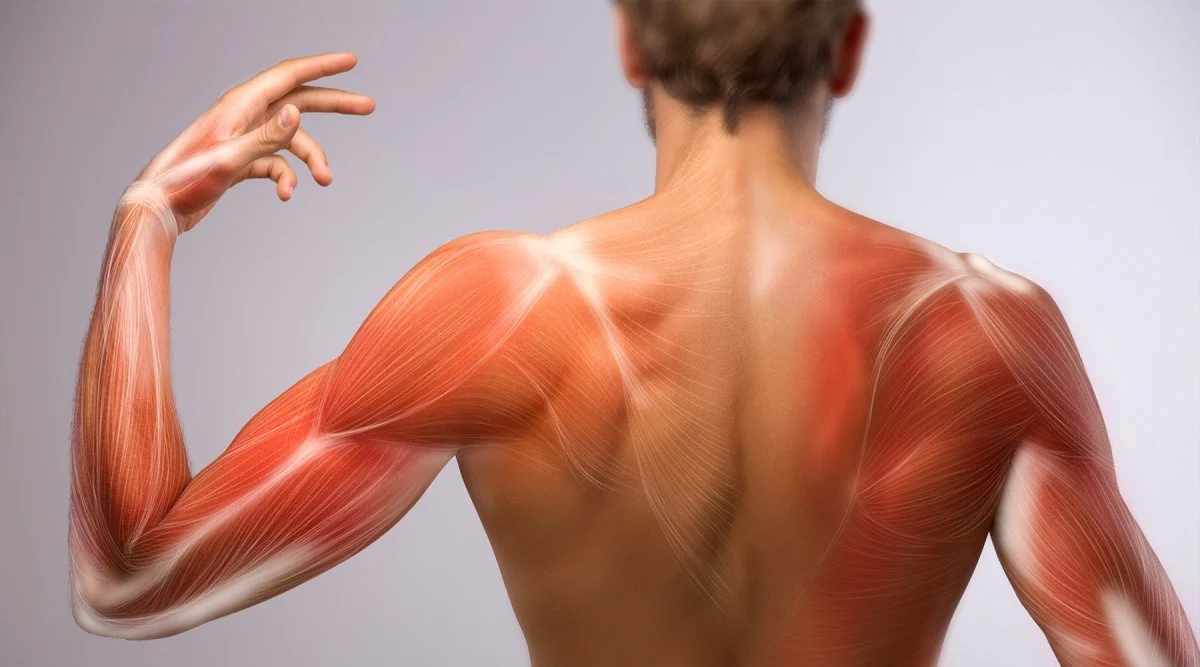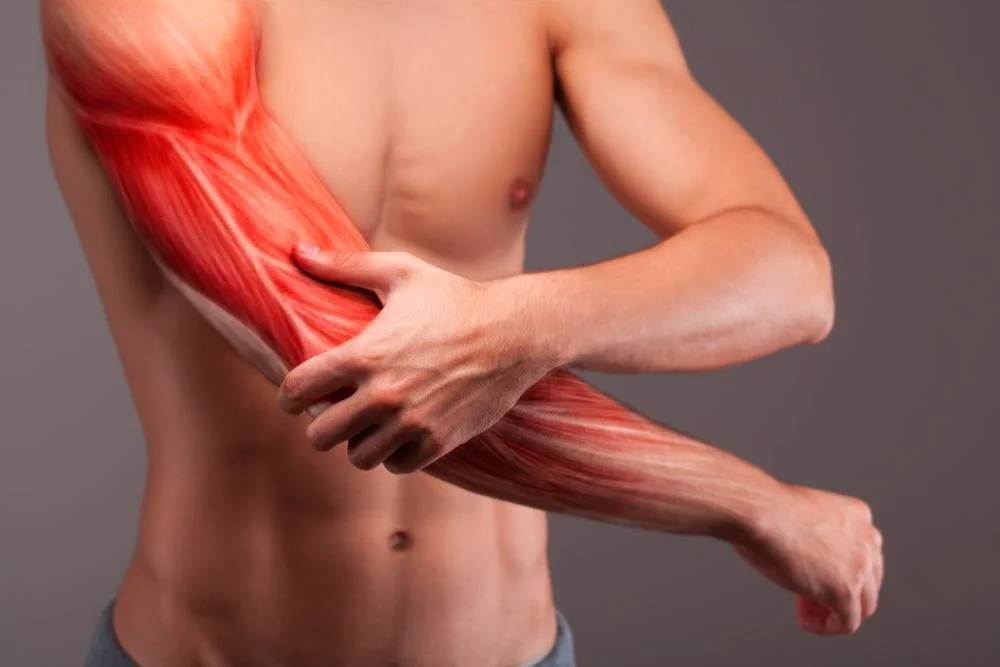Exercise Daily – Building muscle and achieving optimal recovery isn’t just about how hard you work out – it’s about understanding what happens after your workout. The science behind muscle recovery and growth may seem complex, but once you dive into the details, it comes down to a few key processes that make a huge difference in how your body responds to exercise. Let’s embark on a journey into muscle recovery and growth mechanics and explore how you can maximize both.
Muscle recovery and growth are crucial for athletes and deeply rooted in biological and physiological science. When athletes engage in intense physical activity, particularly resistance or strength training, microscopic damage occurs in the muscle fibers. This damage triggers a repair process where the body responds by activating satellite cells, which fuse to the damaged muscle fibers to help repair and rebuild them. This process repairs the muscles and makes them stronger and larger in anticipation of future stress, a concept known as muscle hypertrophy.

Introduction to Muscle Recovery
After a high-intensity workout, your skeletal muscles undergo a complex repair and recovery process, essential for promoting muscle growth and preventing muscle fatigue. Exercise-induced muscle damage, especially from resistance exercises and eccentric contractions, causes microscopic damage to the muscle fibers. This leads to delayed-onset muscle soreness (DOMS) and triggers the body’s natural response to aid muscle recovery.
The science of muscle recovery highlights how proper post-workout recovery helps muscle cells repair damage while also promoting muscle building and preventing muscle mass loss. According to a systematic review and meta-analysis published in the Journal of Sports Science, short-term and long-term recovery strategies are crucial for enhancing muscle strength and performance.
Why Muscle Recovery is Crucial
Muscle recovery is essential for multiple reasons. When you exercise, your muscle fibers sustain damage, particularly with resistance or high intensity. Recovery is when those fibers repair themselves, becoming thicker and stronger. Without proper recovery, your body would be stuck in a cycle of breakdown without improvement. Moreover, recovery reduces the risk of injury, allowing you to maintain consistency in your training.
Understanding Muscle Soreness
Athletes and fitness enthusiasts know muscle soreness all too well. The tightness and discomfort you feel after a hard workout are a natural response to the stress on your muscles. But why do we get sore, and is soreness always an indicator of muscle growth?
What Causes Muscle Soreness?
The soreness you feel after a challenging workout is due to microscopic tears in your muscle fibers. This happens when muscles are exposed to new or intense activities they’re not accustomed to. These tiny tears are necessary for muscle repair and growth, and the healing process results in stronger muscle fibers. The discomfort, however, is a sign that your muscles have been pushed beyond their normal capacity.
The post-exercise muscle recovery phase is critical for adapting to stress and recovery cycles. Sports medicine experts emphasize that neglecting this phase impairs recovery, limits muscle strength gains, and can lead to chronic muscle damage. For example, recovery from eccentric muscle damage requires a focus on improving muscle blood flow, reducing inflammation, and ensuring proper rest for the muscle groups targeted during exercise training.
Delayed Onset Muscle Soreness (DOMS)
Delayed Onset Muscle Soreness (DOMS) usually peaks 24 to 72 hours after exercise. It occurs because your muscles are still in the process of repairing those tiny tears. DOMS can be severe enough to affect your ability to move normally, but it’s a sign that your body is adapting to the stress. Over time, as you continue training, your body becomes more efficient at handling similar stressors, reducing the frequency and intensity of DOMS.
Additionally, listening to your body and incorporating evidence-based recovery methods, such as proper nutrition and active recovery, enhances recovery and prevents muscle damage markers from escalating. Understanding the role of skeletal muscle recovery is key in optimizing strength recovery and enhancing overall performance in future exercise sessions.

The Role of Protein in Muscle Growth
Protein plays a central role in muscle repair and growth. Without enough protein, your muscles won’t have the necessary building blocks to recover after exercise. So how exactly does protein contribute to muscle recovery?
Protein Synthesis and Muscle Repair
When muscles are damaged during a workout, they need protein to rebuild. This process is known as muscle protein synthesis. During protein synthesis, muscle fibers are repaired and fused, forming new muscle tissue. The more protein synthesis occurs, the more muscle growth and repair occur. Protein is often emphasized in post-workout nutrition – it supports muscle recovery.
Dietary Protein and Muscle Recovery
Consuming enough protein through your diet is crucial to ensuring proper recovery. High-quality protein sources, such as lean meats, eggs, dairy, and plant-based proteins, provide the essential amino acids your muscles need to repair and grow. Consuming protein immediately after your workout helps kickstart the recovery process. Research suggests 20-30 grams of protein post-workout can significantly enhance muscle repair and promote growth.
The Inflammatory Response: Friend or Foe?
Inflammation often gets a bad rap, but when it comes to muscle recovery, it serves an essential purpose. However, excessive inflammation can slow recovery, making it a double-edged sword.
Understanding Inflammation in Muscle Recovery
Inflammation occurs when your muscles experience stress and damage. Your body’s natural response to injury or trauma signals the immune system to send resources to the affected area. While inflammation is a crucial part of the healing process, it can inhibit muscle recovery and prolong soreness if it persists for too long. Thus, balancing inflammation is key to optimal recovery.
How to Reduce Inflammation After Intense Exercise
Reducing excessive inflammation can help speed up recovery. Cold therapy, such as ice baths, is popular for reducing swelling and inflammation. Foam rolling and massage also help break down tissue adhesions and improve blood flow. Consuming anti-inflammatory foods, such as berries, leafy greens, and omega-3-rich fish, can help reduce inflammation and promote faster muscle recovery.
Recovery Techniques: How to Help Muscles Recover
Muscle recovery isn’t just about waiting for soreness to pass – it’s about actively promoting healing through specific recovery techniques. Whether through stretching, active recovery, or more specialized methods, how you recover can significantly affect your muscle growth and performance.
Active Recovery vs. Passive Recovery
Active recovery involves low-intensity activities that keep the blood flowing to your muscles, such as walking, swimming, or light stretching. This keeps muscles limber and helps flush out metabolic waste that builds up during exercise, reducing soreness. On the other hand, passive recovery means complete rest. Both forms of recovery have their place. For example, a day of passive recovery might be needed after an intense weightlifting session, whereas active recovery is often used between lighter workout days.
Stretching and Mobility Work
Incorporating stretching and mobility exercises into your routine not only aids recovery but also helps improve flexibility and range of motion. Stretching after exercise reduces muscle stiffness, while mobility work can prevent future injuries. These recovery techniques also improve blood flow, which brings oxygen and nutrients to damaged muscles, speeding up the repair process.

Post-Exercise Recovery: What Happens After You Work Out
When your workout ends, the work of muscle repair and growth begins, while the immediate effects of exercise may be noticeable through fatigue or soreness, the internal processes of recovery are hard at work, repairing muscle fibers and restoring energy.
Muscle Damage and Repair
Muscle damage is inevitable during resistance training or intense workouts. This damage triggers the body’s repair mechanisms, which send oxygen, nutrients, and hormones to the affected areas. This healing process is what leads to stronger and larger muscles over time. However, if your muscles don’t recover, they can remain in a state of breakdown, increasing the risk of injury and overtraining.
Markers of Muscle Damage
Indicators such as soreness, stiffness, and temporary loss of strength are common markers of muscle damage. These signals tell you that your muscles are in recovery mode and need time to repair. Pushing through these signals without adequate rest can lead to long-term muscle damage and reduced performance.
Muscle Growth and Repair: How Muscles Grow After Exercise
Muscle growth doesn’t happen during your workout. It happens after. Muscle hypertrophy, or the increase in muscle size, is driven by the body’s response to the damage sustained during exercise. Understanding how muscles grow is crucial for increasing muscle mass and strength.
Muscle Hypertrophy and Growth Factors
Hypertrophy occurs when muscle fibers repair and grow after being damaged by exercise. Hormones like testosterone and growth hormone regulate this process and promote the development of new muscle tissue. A combination of resistance training, proper nutrition, and adequate recovery is essential for optimal muscle growth. The hypertrophic process is interrupted without sufficient recovery time, limiting muscle gains.
On the other hand, recovery is governed by a balance of rest, nutrition, and hydration. Adequate protein intake provides the amino acids necessary for muscle repair, while carbohydrates help replenish glycogen stores depleted during exercise. Hydration is vital to maintaining cellular function, and sleep plays a critical role in muscle recovery, as growth hormone is released primarily during deep sleep. Additionally, inflammation from muscle damage triggers the release of cytokines, which play a role in both muscle repair and adaptation. The balance between exercise stress, nutrition, rest, and recovery ultimately determines the rate and efficiency of muscle growth and overall athletic performance.

Conclusion
Muscle recovery isn’t just a passive phase between workouts – it’s an active and critical part of the muscle-building process. You can significantly enhance muscle repair and growth by incorporating effective recovery techniques, such as consuming enough protein, managing inflammation, and using both active and passive recovery. Remember, recovery is just as important as your workout itself. The key to building muscle isn’t only about what you do in the gym – it’s also about what you do after.
FAQs – The Science Behind Muscle Recovery and Growth
Q: What are the best foods for muscle recovery?
A: Foods rich in protein, like chicken, fish, eggs, and plant-based proteins, are excellent for muscle recovery. Anti-inflammatory foods like berries, leafy greens, and nuts can also aid the recovery process.
Q: How long does muscle recovery take?
A: Muscle recovery can take anywhere from 24 to 72 hours, depending on the intensity of the workout and the recovery strategies used.
Q: Does stretching help with muscle recovery?
A: Yes, stretching reduces muscle stiffness, improves flexibility, and enhances blood flow, promoting faster muscle recovery.
Q: What is the difference between active and passive recovery?
A: Active recovery involves low-intensity activities like walking or swimming, while passive recovery involves complete rest. Both have benefits depending on the workout and recovery needs.
Q: How can I reduce muscle soreness after a workout?
A: To reduce muscle soreness, try foam rolling, stretching, cold therapy, and consuming protein-rich meals shortly after exercising.





